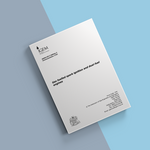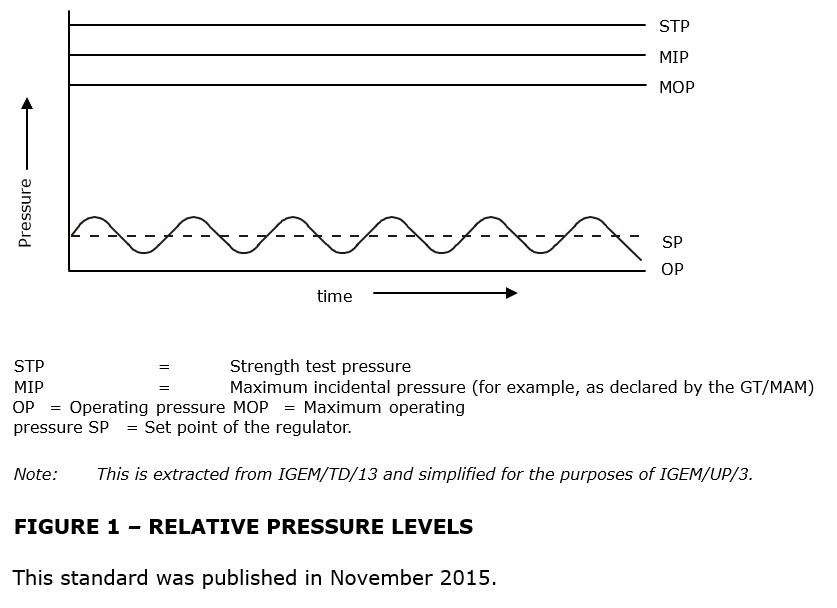IGEM/UP/3 Edition 3 - Gas fuelled spark ignition and dual fuel engines

These procedures apply to spark ignition and compression ignition engines of both the reciprocating and rotary type, either stationary or portable, for both continuous and standby duties, excluding engines used for vehicle and marine propulsion. Primarily they cover the essential safety aspects of the engineering, installation and operation of engines using 1st, 2nd or 3rd family gases as fuel. They apply to gas pipework and control systems downstream of, and including, the engine manual isolation valve, at an upstream MOP > 0.5 bar.
Specifically, it contains details of:
- Legal considerations such as Gas Safety (Installation and Use) Regulations
- Engine installation
- Gas supply pressures
- Gas supply pipework
- Facilities for testing and purging
- Venting
- Hazardous area classification
- Air supplies
- Safety of electrical equipment
- Exhaust system
- Essential system requirements
- Engine design and operation
- Ancillary equipment
- Commissioning and handover
- Maintenance.
Introduction
1.1 This Standard supersedes IGE/UP/3 Edition 2, Communication 1720, which is obsolete.
1.2 This Standard has been drafted by an Institution of Gas Engineers and Managers (IGEM) Panel, appointed by the Gas Utilization Committee, subsequently approved by that Committee and by IGEM’s Technical Co-ordinating Committee on behalf of the Council of IGEM.
1.3 This Standard provides guidance on the installation of gas fuelled spark ignition and dual-fuel engines. It has been compiled taking into account international Standards and the experience gained during many years of operation and testing of engines in Great Britain (GB).
1.4 Terms such as "maximum operating pressure" (MOP), “maximum incidental pressure” (MIP) and “operating pressure” (OP) have been introduced to reflect gas pressure terminology used in European Standards. These terms will arise in all relevant IGEM Standards and, possibly, in other Standards.
Note: Referring to Figure 1, OP is shown to oscillate about the set point (SP). MOP can be declared at any value from OP upwards to a limit below MIP.
1.5 This Standard makes use of the terms, “must”, “shall” and “should” when prescribing particular requirements. Notwithstanding Sub-Section 1.8:
- the term “must” identifies a requirement by law in GB at the time of publication
- the term “shall” prescribes a requirement which, it is intended, will be complied with in full and without deviation
- the term “should” prescribes a requirement which, it is intended, will be complied with unless, after prior consideration, deviation is considered to be acceptable.
Such terms may have different meanings when used in Legislation, or Health and Safety Executive (HSE) Approved Codes of Practice (ACoPs) or guidance, and reference needs to be made to such statutory legislation or official guidance for information on legal obligations.
1.6 The primary responsibility for compliance with legal duties rests with the employer. The fact that certain employees, for example “responsible engineers”, are allowed to exercise their professional judgement does not allow employers to abrogate their primary responsibilities. Employers are required to:
- have done everything to ensure, so far as it is reasonably practicable, that “responsible engineers” have the skills, training, experience and personal qualities necessary for the proper exercise of professional judgement
- have systems and procedures in place to ensure that the exercise of professional judgement by “responsible engineers” is subject to appropriate monitoring and review
- not require “responsible engineers” to undertake tasks which would necessitate the exercise of professional judgement that is not within their competence. There should be written procedures defining the extent to which “responsible engineers” can exercise their professional judgement. When “responsible engineers” are asked to undertake tasks which deviate from this they should refer the matter for higher review.
1.7 It is now widely accepted that the majority of accidents in industry generally are in some measure attributable to human as well as technical factors in the sense that actions by people initiated or contributed to the accidents, or people might have acted in a more appropriate manner to avert them.
It is therefore necessary to give proper consideration to the management of these human factors and the control of risk. To assist in this, it is recommended that due regard be paid to HSG48 and HSG65.
1.8 Notwithstanding Sub-Section 1.5, this Standard does not attempt to make the use of any method or specification obligatory against the judgement of the responsible engineer. Where new and better techniques are developed and proved, they are to be adopted without waiting for modification to these requirements. Amendments to this Standard will be issued when necessary, and their publication will be announced in the Journal of the Institution and other publications as appropriate.
1.9 Requests for interpretation of this Standard in relation to matters within their scope, but not precisely covered by the current text, is to be addressed in writing to Technical Services, IGEM, IGEM House, High Street, Kegworth, Derbyshire, DE74 2DA, or emailed to [email protected], and will be submitted to the relevant Committee for consideration and advice, but in the context that the final responsibility is that of the engineer concerned. If any advice is given by or on behalf of IGEM, this does not relieve the responsible engineer of any of his or her obligations.

Scope
2.1 This Standard applies to spark ignition and compression ignition engines of both the reciprocating and rotary type, either stationary or portable, for both continuous and standby duties.
Note 1: This Standard is intended for land-based installations but the general principles may be used for offshore installations.
Note 2: At the time of publication, there has been little experience in the design and installation of Sterling engine packages. However, in such cases, it is recommended that the general intent of this Standard be followed. For burner systems, reference may be made to IGEM/UP/12. For associated compressors see also IGEM/UP/6.
This Standard does not apply to engines when used for vehicle or marine propulsion.
2.2 This Standard refers, primarily, to essential safety aspects of the engineering, installation and operation of engines using lighter and heavier than air flammable fuel gases such as Manufactured Gas, Natural Gas (NG), Liquefied Petroleum Gas (LPG) and LPG/air mixtures, (1st, 2nd and 3rd family gases are further defined in BS 1179-6). They may be appropriate for other gases such as Landfill, Anaerobic Digester and Mines Recovery Gas, but the particular characteristics of the gas needs to be recognised with respect to consequent effects on materials and operations.
2.3 This Standard applies to gas pipework and control systems downstream of, and including, the engine manual isolation valve.
2.4 Sections that do not specifically relate to a particular gas apply to all gaseous fuels in a dual fuel installation.
When dealing with liquid fuel oils, guidance can be found in BS EN 590, BS 2869 and BS 6380 or suitable equivalent standards regarding oil quality, or BS 5410 for oil-fired installations.
2.5 All pressures are gauge pressures unless otherwise stated.
2.6 Italicised text is informative and does not represent formal requirements.
2.7 Appendices are informative and do not represent formal requirements unless specifically referenced in the main sections via the prescriptive terms “must”, “shall” or “should”.
